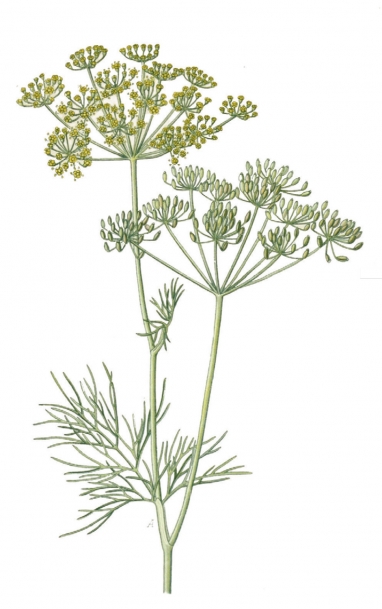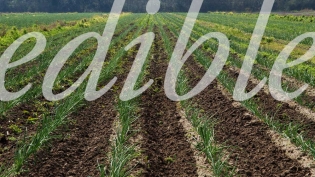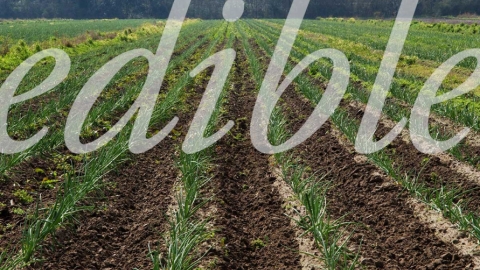Plants with a Purpose
What is an herb? To most, it is a plant with a purpose. Simply being useful gets you the grade. Historically, herb gardens were used for medicinal and culinary purposes. During the Renaissance, 15th century European herb gardens were found in nearly every monastery; the monks would dispense herbs to ease suffering. It was something tangible they could do to complement their spiritual support of the people they served. Valeriana calms the nerves, Achillea is an astringent that also reduces fever, Artemisia (or wormwood) reduces intestinal worms, Monarda eases headaches and Allium is a poultice for snakebites.
Kitchen gardens outside castles, palaces and cottages also provided herbs for culinary purposes: to add flavor to bland foods and perhaps hide some from unsavory ones. Eighteenth-century American gardens included herbals for these same reasons. In 1751 the Pennsylvania Hospital instituted their first “physic garden” to provide physicians with a ready source of ingredients for the plant-based medical remedies of the period. The physic garden was the pharmacy. Herbs were also grown for fragrance, cosmetics and pigmentation. Today, we primarily use herbs for culinary and ornamental purposes but you might want to rethink how you incorporate herbal plants in the garden and how you consume them.
For most herbs the two most important cultural requirements are full sun and well-drained soil. Sunlight increases the concentration of the essential oils in the herb, so a full-sun environment is important if you are growing herbs to harvest. I never fertilize herbs with anything other than compost; in fact, synthetic fertilizers can actually dull the herb’s essence. Dead-heading, or pinching off buds and blooms, is also another important maintenance chore. The more you remove flower buds the more concentrated the essential oils in those that remain. Once the herb begins to flower the flavor begins to change.
For optimum flavor and fragrance, harvest herbs after buds have formed but before the flower has opened. The essential oils are at their peak at this stage.
If you are not ready to use or process your herbs then keep those buds pinched to encourage continual growth. There are some exceptions to this rule: rosemary and thyme are best harvested when they are in full bloom for peak flavor. Some herbs multi-task so you do want to let them flower and go to seed so you can harvest some spice. Coriander is the seed of cilantro, for example. I typically harvest the leaves of cilantro through out the summer and at the end of the season I let this annual herb flower and go to seed for a final harvest of coriander. A few stray seeds usually find their way back into the garden to germinate the following spring.
Another advantage that herbals bring to the garden: They are virtually pest free and they help attract beneficial insects and pollinators. Herbs that have umbel-shaped flowers are particularly good at attracting beneficial insects. The blooming umbels of lovage, dill and fennel are host to hover flies, bees and beneficial wasps. Some of the best herbs for attracting beneficial insects are not necessarily the ones I use the most in the kitchen but they play an important role in the ecology of the garden. The fuzzy, cucumber-scented leaves of borage can be made into a tea that helps to reduce fever but I really grow it for the bumblebees it feeds. I have made homegrown chamomile tea from this rather prolific herb; however, if allowed to flower and go to seed you can have a chamomile nuisance on your hands. Additionally, perennial herbs, including oregano, sage, thyme, marjoram, tarragon and mint, among others, are also quite drought tolerant.
If you are a creative type you can also turn your herbals into a savory cocktail, spice ball, sachet or potpourri. A spice ball, or pomander, is an orange that has been pierced with whole cloves and rolled in a cinnamon, allspice and nutmeg mixture. Artemisia is easily wound to make an aromatic herb wreath that purportedly deters spiders; and sweet-scented little pillows stuffed with lavender and lemon verbena make a nice sachet for your linen drawer.
Or try your hand at the art of healing with poultices. This summer I will take to the garden or pasture when I have an abrasion. A poultice, herbalist Richo Cech explains, “is a whole or mashed herbal material—leaf, root or seed—layered or spread on skin without extraction or complex preparation.” Once again, the garden is the pharmacy.
Jeneen Wiche teaches at the University of Louisville and raises Kentucky-grazed lamb, poultry and eggs at Swallow Rail farm in Shelby County with her husband, Andy Smart.








